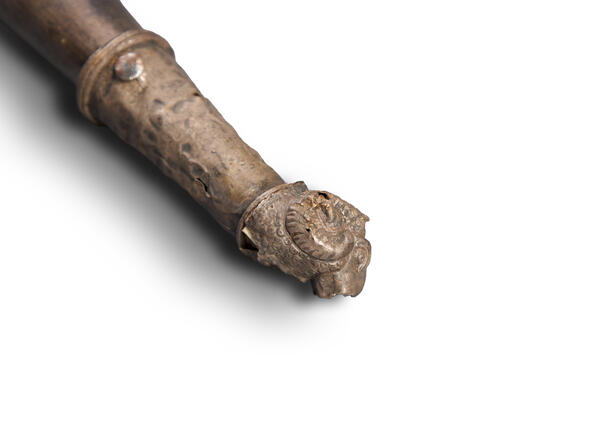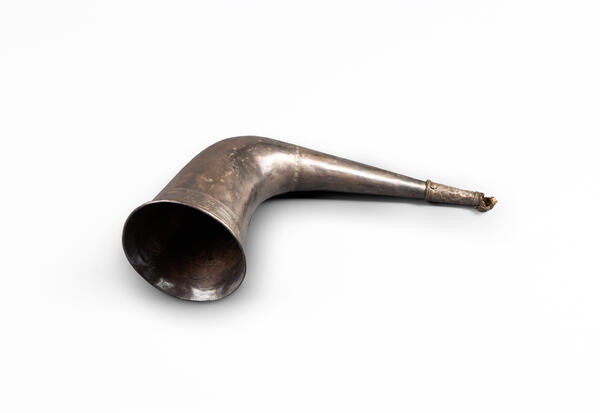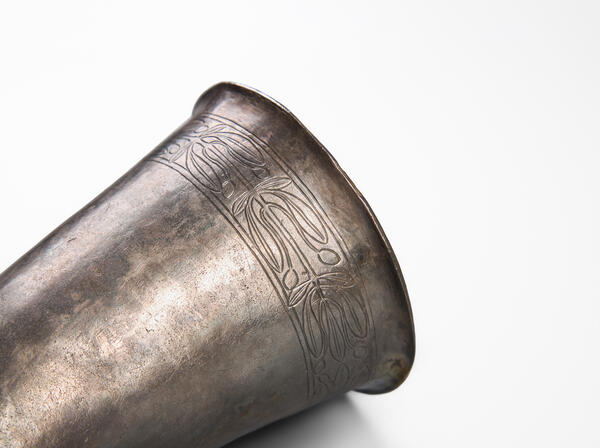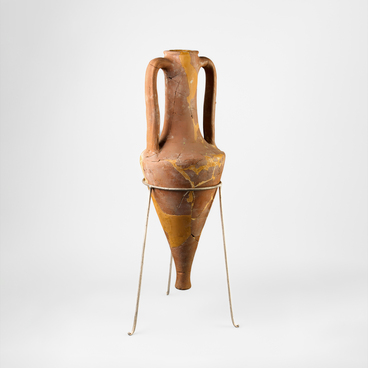The Voronezh forest-steppe expedition concluded the field excavation season of 1964 with surveys in the village of Durovka in Alekseevsky district (now the village of Verbnoye in Krasnensky district) of the Belgorod region. It was there that the silver rhyton from the museum’s collection was found.
A rhyton is a horn-shaped vessel with a small hole at the lower narrow end. This vessel is an imported item made by Greek craftsmen who created their products with a shortened wide body ending with an image of an animal’s head — in this case, a ram.
The rhyton was located at the bottom of the burial ground, where a noble Scythian warrior was buried. The grave walls were lined with horizontally placed oak logs, and above the grave was constructed a wooden roof resembling a tent. The bottom of the grave and the entrance were also lined with wood. A special entrance led to the grave from the southwest side.
Candidate of Historical Sciences Anna Ivanovna Puzikova, who conducted research on this burial, assumed that “the deceased and his companion (wife or concubine), crying, screaming and moaning, were carried through the dromos corridor and laid at the bottom of the grave. With them, all the most expensive and best of what they used during their lifetime was placed: an iron shell, an amphora with wine, which was delivered from some distant Greek city located on the Mediterranean Sea; next to the amphora, a silver rhyton was placed, which could testify not only to the nobility and wealth of the buried, but also be an attribute of his priestly functions. Beside the deceased, several quivers with arrows were placed (judging by the large number of arrowheads). The relatives did not forget about the food for the buried: on a special wooden structure, they put a bronze cauldron with a whole ram carcass, and nearby they placed meat from pigs, horses, and cows. For the convenience of ‘use’, two iron knives with bone handles were stuck into the meat. In the afterlife, three riding horses were to serve the deceased leader, symbolized by three sets of horse harnesses.“
After the burial, the entire structure was covered
with earth and a mound was erected, which was a rounded mound more than two
meters high, with a mound diameter of 42–43 meters. The size of the graves and
the height of the mounds depended on the status of the buried. The ceremony
ended with a memorial service (wake) with abundant food and drink. Clay pottery
was left on mounds, which is why archaeologists so often find a large number of
fragments of ceramics, and sometimes whole pots, when excavating mounds.




